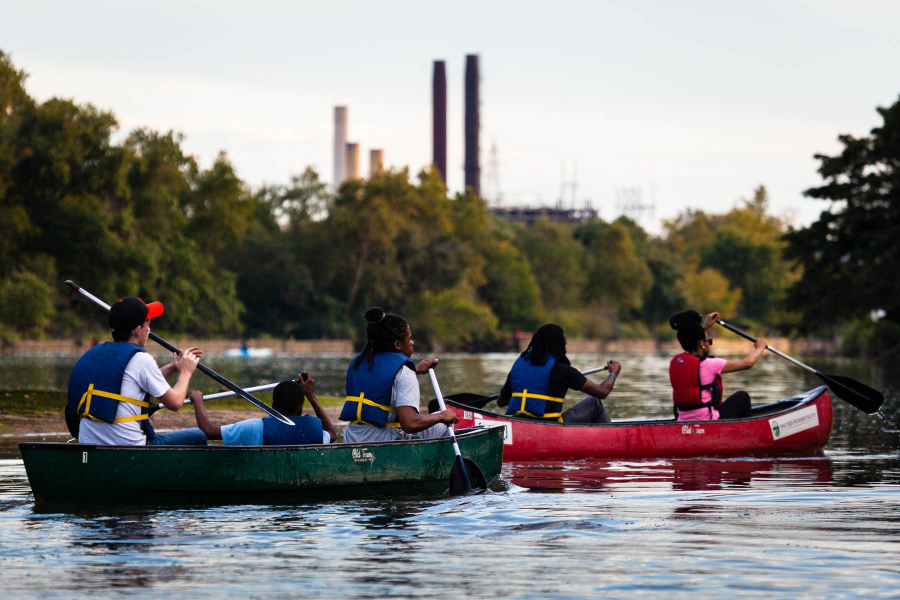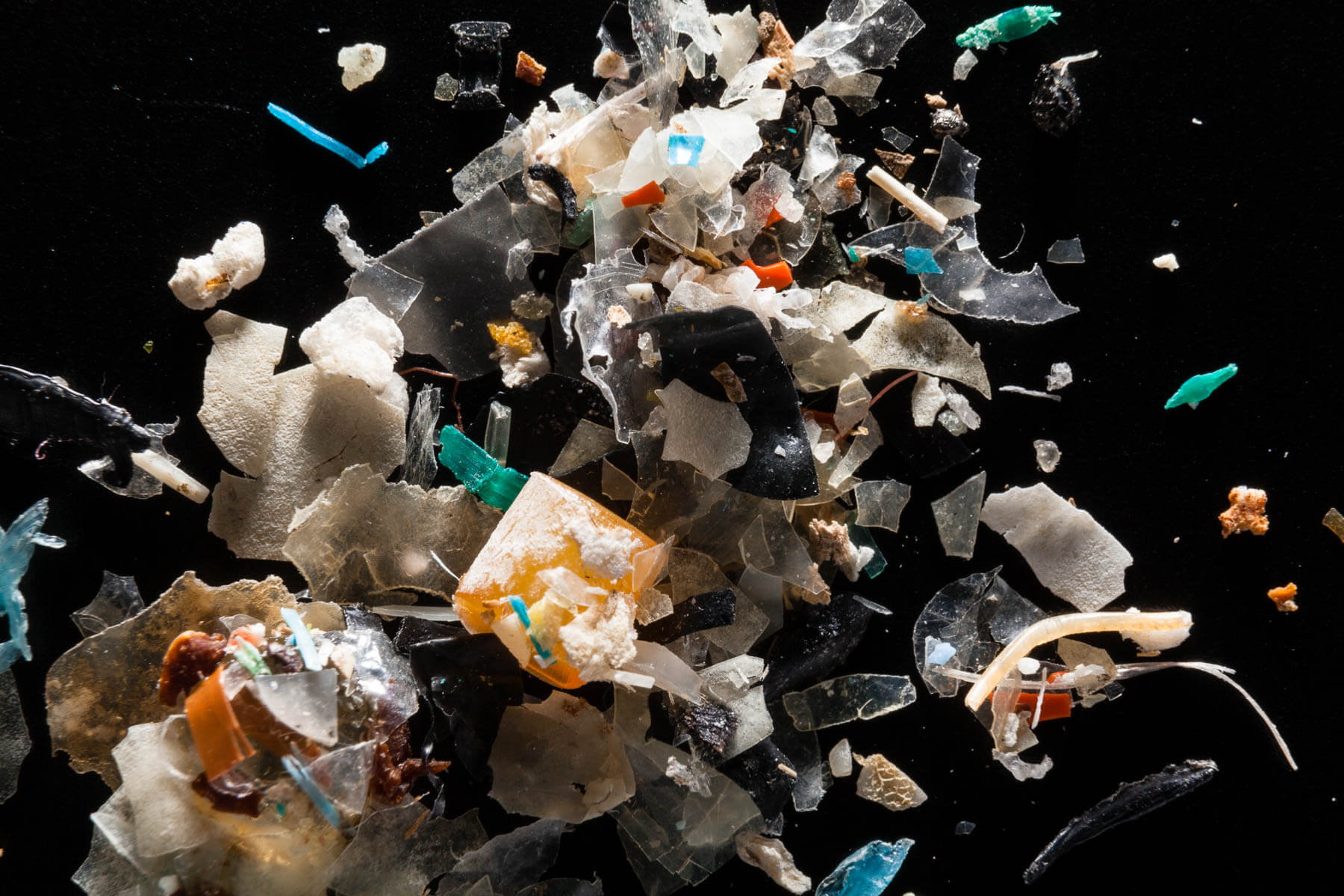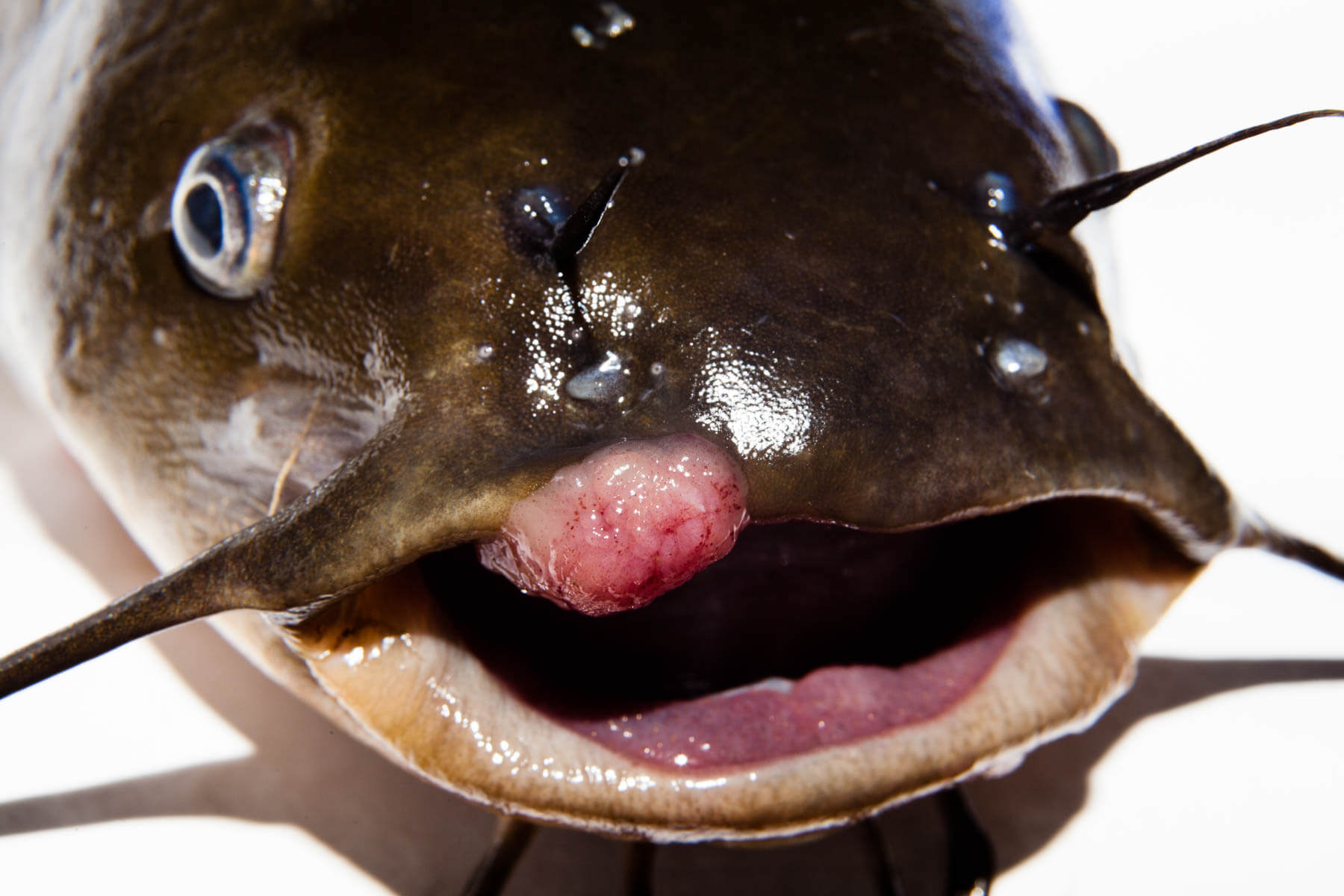A cocktail of contaminants in Chesapeake waters

The signing of the original one-page Chesapeake Bay Agreement in 1983 was a historic moment that marked one common-sense idea: the Chesapeake Bay estuary is an interconnected watershed and working together to improve its health would benefit everyone that lives, works and recreates there. This cooperative approach helped end the oyster wars, brought about collaboration across the jurisdictions and led to advancements in science.
Reducing pollution was a hallmark of the first agreement, leading the Environmental Protect Agency (EPA) in 2010 to establish the Chesapeake Bay Total Maximum Daily Load, which sets limits on the amount of nitrogen, phosphorus and sediment pollution that can enter the Bay and its tidal rivers. Reductions in these three areas have led to many successes in improving water quality, but a wide range of other contaminants continue to degrade and pose threats to public and ecosystem health.
The Chesapeake Bay Program Science and Technical Advisory Committee (STAC) recently released a report covering what we currently know about contaminants harming the Bay, the challenges they pose, what opportunities exist to help with their reduction and emerging toxics that threaten watershed health.
What is a contaminant and how do they harm our waterways?
Substances that negatively affect the health of humans and the environment are collectively referred to as contaminants. Even substances that are initially positive and intentional—like medications—can become toxic and harmful in the wrong locations and quantities.
Known contaminants include pesticides, pharmaceuticals, flame retardants, salt from deicers and chemicals from industrial uses, such as polychlorinated biphenyls (PCBs)., As researchers reviewed information on these contaminants, they uncovered that microplastics, hormones and personal care products are adding to the complex mix of pollution harming our ecosystem. Each contaminant can cause problems on its own, but also have unexpected impacts when mixing with others. While there is limited research on these interactions, existing evidence suggests high levels of contaminants in air, water and soil strongly impact our fisheries, waters and lands.

Lesions and tumors in catfish
Fred Pinkney, a Chesapeake Bay Field Office biologist with U.S. Fish and Wildlife Service, has studied the growth of tumors on bullhead catfish for years. The Anacostia River, which flows through heavily industrialized areas, is historically one of the most polluted rivers in the Chesapeake Bay watershed and therefore a common site for bullhead catfish tumor studies. Polycyclic aromatic hydrocarbons (PAHs), pollutants that are released when burning coal, oil and other substances, induce the growth of liver tumors in catfish. Pinkney found that liver tumor prevalence in Anacostia bullheads was the highest reported in North America for 15 years running (1996-2011). While the number of affected bullheads had declined dramatically by 2016, tumor rates were still significantly higher than comparison rivers on Maryland’s Eastern Shore.
PAHs are not the only factor affecting tumors in fish. PCBs, a group of chemicals which can cause cancers and neurological problems in humans, stimulate tumor growth. Although PCBs were banned in the U.S. in 1979, they continue to persist in our environment today. Birthe Veno Kjellerup, a researcher with the University of Maryland, found that these legacy PCB concentrations have actually increased in urban areas in recent years.

Fish behavior, intersex characteristics and pharmaceuticals
The pharmaceuticals we put into our own bodies also make their way into the ecosystem and have unintended consequences on aquatic creatures. Vicki Blazer, a researcher with the U.S. Geological Survey, found that synthetic hormones and estrogenic endocrine disrupters promote intersex characteristics in fish. Commonly prescribed medications like anti-depressants, antihistamines, antibiotics and diabetes medications have all been found in rivers and streams through the watershed. As individual factors or as part of a mix in our waterways, these medications influence the maturity, growth and behavior of our marine species.
While improper disposal of medications is one way in which pharmaceuticals enter our waterways, they can also come directly from the human body. When we ingest medications, our systems don’t ordinarily utilize the entire dose. Trace amounts are excreted in our waste, and our wastewater treatment plants were not designed to remove these pharmaceuticals from our water.
Pesticides, fish kills and disease
Insecticides and herbicides are used by farmers and gardeners to protect crops, but excess or improperly applied pesticides often make their way off of the land and into the water. According to Blazer’s research, pesticides in waterways lower the ability of a fish to fight off disease. Over 80% of Chesapeake waterways have some amount of impairment from contaminants, and most have additional stressors such as low oxygen levels, high temperatures and increased bacteria. These conditions make pesticide-induced immunosuppression particularly dangerous for fish that live in the Bay and its tributaries.
Fish kills have been linked to polluted agricultural runoff. Between 2002 and 2009, the U.S. Geological Survey investigated multiple cases concerning smallmouth bass in the Potomac and Susquehanna rivers. Instead of a single cause, researchers found a mix of maladies impacting the fish all at once. Fish as young as two months of age had numerous parasites, viruses and bacterial infections.
What can be done?
Best management practices (BMPs) are currently used throughout the watershed to help reduce nutrient and sediment pollution and restore the environment. The STAC workshop looked at contaminants from both agricultural and urban sectors and found several BMPs that may help reduce contaminants and improve nutrient and sediment pollution runoff. However, more study is needed—particularly on how the various contaminants interact with one another, how the consequences of these interactions can change based on concentrations or environmental factors, and what that means for future fish health.
Potential solutions for reducing contaminants in urban environments
In urban areas, BMPs largely focus on stormwater. Cities and other heavily developed areas tend to have large amounts of impervious surfaces such as roads and parking lots. When it rains, the water will run off these surfaces, picking up contaminants along the way, which end up in our rivers and streams. A better practice is to incorporate natural landscapes (think green infrastructure) in your stormwater designs to allow rain to soak into the ground.
Practices like bioretention, which holds water and slows its release, and biofiltration, which works with the environment to filter out contamination (e.g. rain gardens, forest buffers), show promise in reducing contaminants, yet it is important to remember that combating toxics at the source, does not necessarily lead to an equal reduction in the impaired body of water. Nearby sources of urban contamination play a large role in how effective those practices will be for reducing contaminants in fish populations, because the contaminants interact with one another and with the environment in complex ways.
For example, wastewater treatment plant upgrades in Lake Onondaga, New York, successfully reduced nutrients in the water that is expelled from the plant, which should be a gain for the environment. However, the reduction in nutrients enhanced the sulfate-reducing conditions in the water, which increased methylmercury levels and impacted the fish that live there. In order to correct that situation, nitrate had to be reinjected into the lake.
Think of these contaminant interactions in a body of water like medicine interactions in a human body. Each medicine is designed to have a specific effect, but how the medications interact with one another can impact the person taking them. Factors such as the time of day, a person’s emotional state and what they’ve consumed can further complicate the impact of the medication, just the way that temperature, flow and other environmental conditions can change how contaminants act in a river. To successfully manage contaminant effects in a body of water, people must look at the entire landscape and take a holistic, multi-stressor approach.

Potential solutions for reducing contaminants in agricultural environments
Manure, sediment and the substances contained within (e.g. pesticides antibiotics or natural estrogens) become part of the soil in agricultural lands, and that contaminated soil is then carried into the water. More research is needed on how the contaminants are transported and the impacts they have on aquatic life. However, like urban settings, slowing the flow of contaminated water and sediment, and treating it at the source, can help to lessen the impact of contaminants in our waterways.
Chemically speaking, manure is a complicated substance with both positive and negative impacts to the environment. While manure can increase organic matter and improve soil structure, it can also contain excess nutrients and antibiotics. It may seem a simple solution but composting and storing manure can both lessen contaminant impacts.
Retention ponds, integrated vegetation ditches and vegetative buffer strips could also help reduce toxic contaminants that enter rivers and streams from pesticide use. These natural systems help slow sediments and nutrients entering waterways, and even act as a filter to help remove contaminants. Advances in buffer programs, agroforestry and the rise of new multifunctional riparian buffers offer ways for farmers and landowners to improve their land and bring in income while helping to lessen contaminant exposure.
The knowledge we have about contaminants is limited to a complex picture of individual rivers and streams, as much is still unknown about how they interact with one another and the role played by other environmental stressors. To truly manage for health and restoration, toxic contaminant remediation must be addressed as part of the whole. The workshop panel recommends that as new BMPs are implemented throughout the watershed, we take a holistic view in studying the impacts to the environment and the life in our waterways.
View the full report, “Integrating Science and Developing Approaches to Inform Management for Contaminants of Concern in Agricultural and Urban Settings.”

Comments
There are no comments.
Thank you!
Your comment has been received. Before it can be published, the comment will be reviewed by our team to ensure it adheres with our rules of engagement.
Back to recent stories